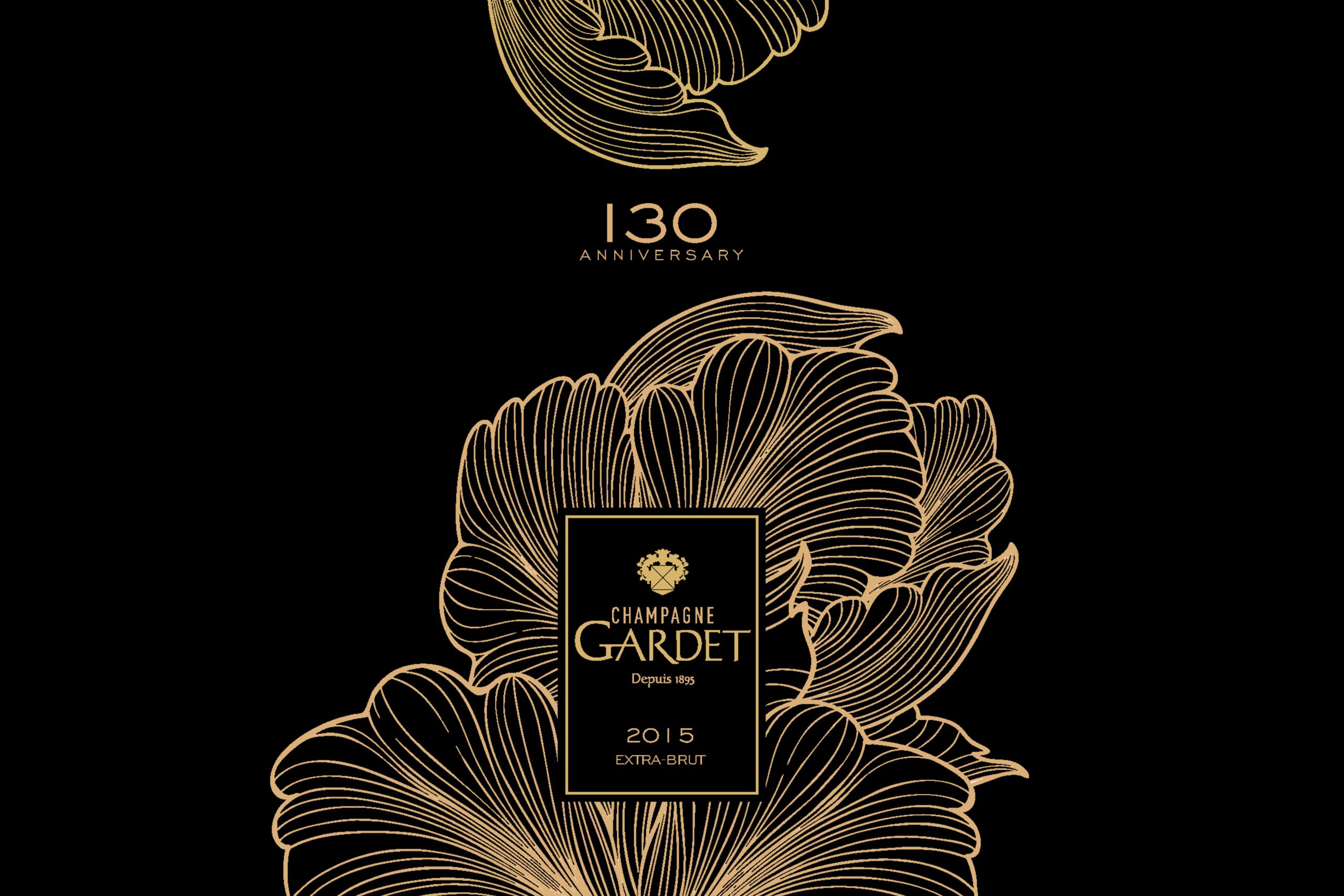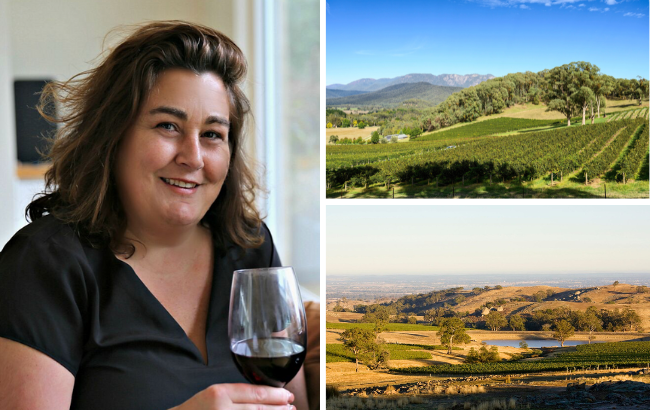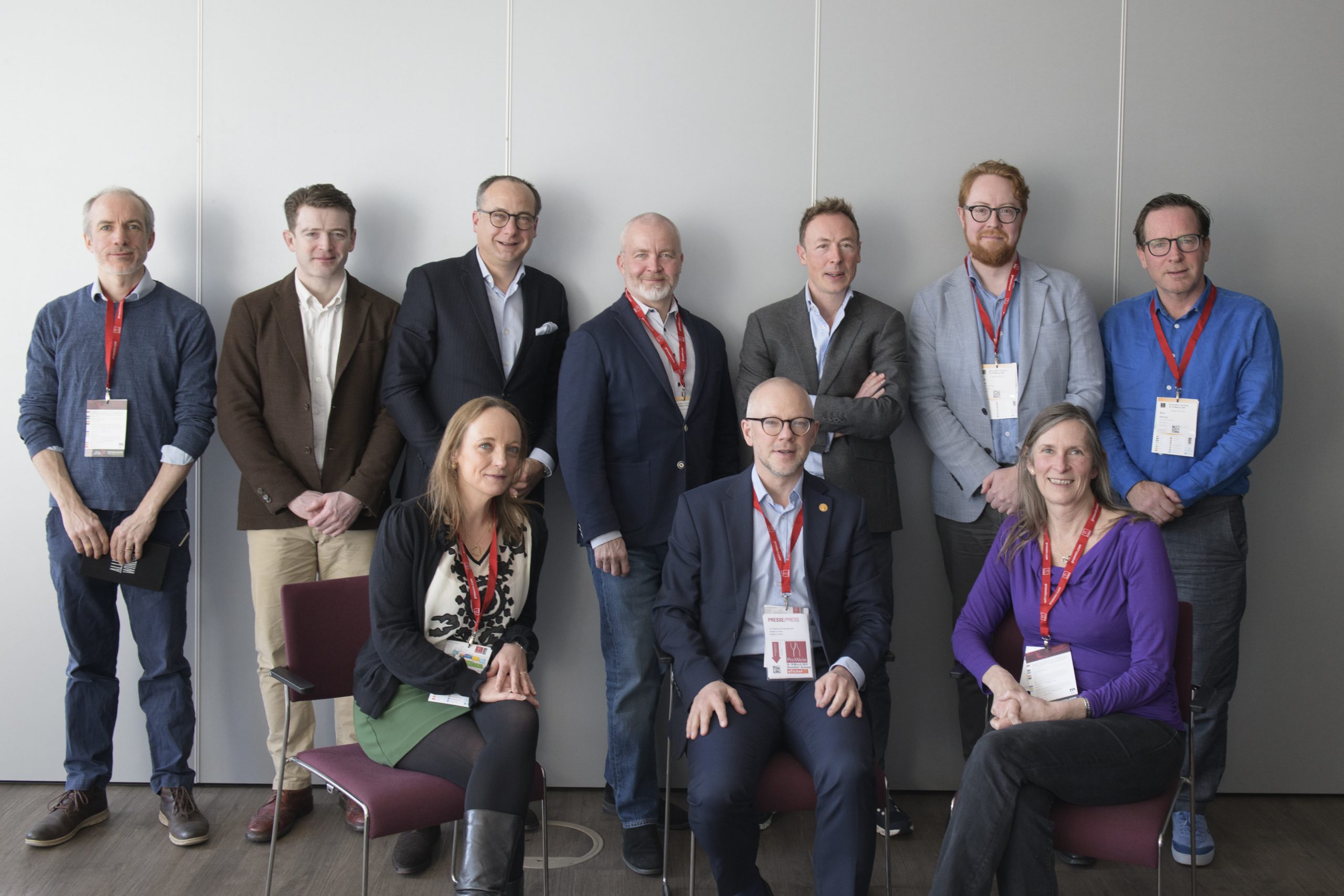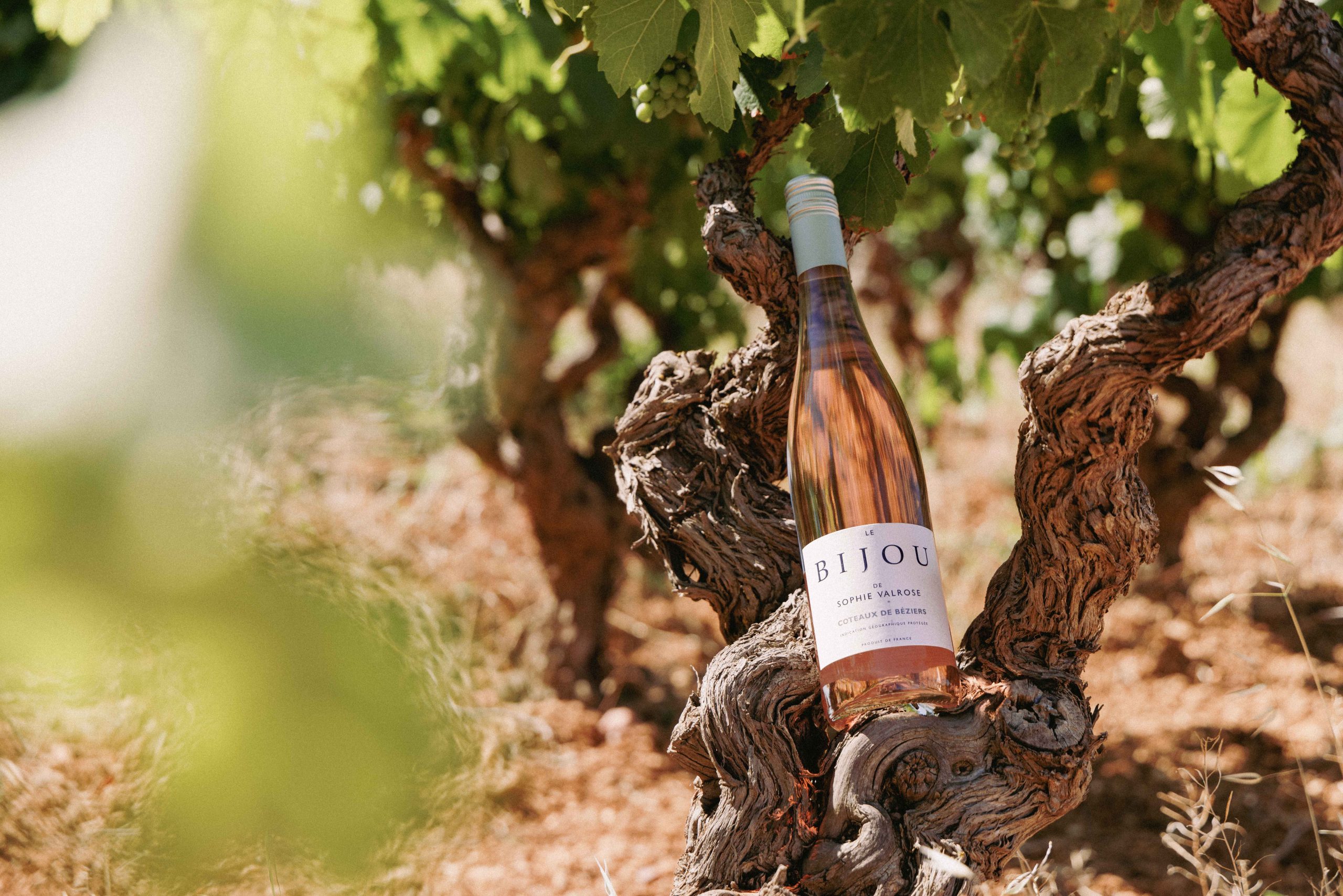In focus: Argentina’s white wines
By Phoebe FrenchArgentine wine may be synonymous with red, and Malbec at that, but a host of producers are starting to experiment with white varieties to create wines that speak of their terroir, in a trend that is only set to grow, writes Phoebe French.
While Malbec accounts for almost 60% of total Argentine wine exports, with 103.1 million litres exported last year, it is important to note that as recently as the late 1980s, Argentina was planted with more white grapes than red.
Pedro Giménez, a vestige of Argentina’s white wine dominance, remains the country’s most planted white grape, according to data from the Instituto Nacional de Vitivinicultura. While in rapid decline and primarily used for high-volume wines, the variety is being championed by the likes of sommelier and winemaker Mariana Onofri of Onofri Wines, who treats the grape with respect to produce a lower-alcohol white that she says is a hit in restaurants. Her attitude is shared by producers across the country who are making premium quality wines from white varieties once planted for bulk production. Grapes such as Sémillon and Chenin Blanc, while still some way behind the likes of Torrontés and Chardonnay in terms of area under vine, are finding favour, with examples released from the likes of Catena, Andeluna and El Enemigo.
Like their red counterparts, Argentina’s whites are now being made with a focus on freshness, reduced use of new oak and a desire for the wine to reflect ‘the place’. Techniques such as picking the grapes earlier than normal, controlling the extent of malolactic fermentation and ageing in larger and older oak vessels are contributing to changes in wine style.
A new blend
Belén Iacono, viticulturist at Catena Zapata’s Adrianna Vineyard in the Uco Valley, explains how the famed Argentine producer is changing the fortunes of unsung white varieties with a new white blend called White Clay. Made from 70% Sémillon and 30% Chenin Blanc, the grapes are sourced from 70- to 80-year-old vines in Luján de Cuyo in Mendoza.
“Sémillon and Chenin used to be used for table wines, and weren’t considered very prestigious,” Iacono says, “but we’ve shown that from old vineyards with low yields they can grow well and produce great wine. Some people who are growing Sémillon are achieving 30 tonnes per hectare, but we only get between seven and eight tonnes.
“Not many people are making top-quality Sémillon in Argentina, especially not in blends. It’s part of Laura Catena’s plan to inspire growers in each region.”
Andeluna, based in Tupungato in the Uco Valley, is another producer experimenting with Sémillon.
Chief winemaker Manuel González recounts how his use of Sémillon started out as an experiment. “I wanted to develop a new white variety, and started looking for one in the Uco Valley because you can’t bring grapes in from outside,” he says.
“I found Sémillon growing in Tupungato, in a district called El Peral. For my first attempt I decided to create several different fermentations, separating the juice out into three parts. One part I put into stainless steel, another I put into a ceramic vessel, and the rest I placed into used French oak. Then I blended all three. We tasted it with the commercial team and they loved it.”
Catena Zapata’s Laura Catena
Area manager for Andeluna, Alicia Casale, believes the variety is likely to take off. “At the moment there aren’t many Sémillons on the market, although in the next harvest we’ll have a lot more for sure. With less than 1,000ha planted in Argentina, and with more wineries starting to use it, it’s good for us to have released ours before many of the others”, she says.
Andeluna is also unveiling a white blend in its 1300 range, made from 60% Chardonnay, 25% Torrontés and 15% Sauvignon Blanc. Using no oak and no malolactic fermentation, it epitomises the winery’s drive to respect the terroir.
Once owning 1,500 barrels, Andeluna has reduced this number to 600, investing in larger oak vessels, ceramic barrels and an amphora. Casale adds: “If you compare us now with 10 years ago, our wines are completely different.
“The trend is to make wines that are a truthful representation of what is in the vineyard. You will find people in Mendoza who think six months in French oak means quality. Oak has nothing to do with quality.”
Onofri of Onofri Wines shares Andeluna’s viewpoint. “I don’t ask a region to produce something it can’t give me,” she says. “Sometimes you just can’t achieve concentration, and a fresher style works far better.”
Using 30-year-old parral-trained vines in the Lavalle area of Mendoza, Onofri produces a 100% Pedro Giménez wine from vines that she harvests in February – around the same time as the sparkling wine grape harvest.
At 11.8% ABV, with total acidity of 6.8 g/l and a pH of 3.18, she makes 3,800 bottles a year from a grape that is rarely mentioned on labels.
“Pedro Giménez is Argentina’s most planted white variety, but it’s rarely seen on its own and most of it ends up in bulk wine,” she says. “I aim to respect the fruit and harvest early to achieve simplicity and freshness.”
Onofri uses a mixture of stainless steel and concrete eggs, and says the wine has proved popular. “It’s had a fantastic reception, particularly in restaurants, and I’ve started exporting it to the States a bit. It’s an easygoing summer wine.”
El Enemigo, owned by Alejandro Vigil, chief winemaker of Catena Zapata, and Adrianna Catena, a historian, and the daughter of Nicolás Catena, has also just released its own take on Sémillon. Produced from the 2017 vintage, the wine is put into oak barrels, 10% of which are new and 90% are used, and aged for 17 months. For a twist, 20% of the wine is aged under flor, imbuing the wine with a pleasing salty tang. Sourced from 30-year-old vines in the Agrelo region of Lujan de Cuyo, the wine is made without sulphur additions, and will be launching in the UK in due course.
Constanza Hartung, the company’s export manager, says: “This is the first vintage that we’ve released of this wine. Sémillon used to be used for high-volume and sweet wines, but for us the idea was to make a quality wine that was still easy to drink.”
She revealed that the winery was also experimenting with Sémillon sourced from the Uco Valley, with the potential to make expressions from grapes sourced at different altitudes.
But what of Argentina’s more familiar white varieties? With a total of 7,919ha planted, Torrontés (Riojano) constitutes 20.9% of the area devoted to white grapes. Combine that with Torrontés Sanjuanino (1,753ha) and Torrontés Mendocino (605ha) and its position is even stronger.
Lucía Romero, director of Bodega El Porvenir, based in Cafayate, in the north of the country, says the producer is challenging the belief that the grape variety “should be alcoholic and intense”.
“We want to tone down our Torrontés a bit without losing the personality,” she says.
Asked whether this makes a wine that reflects its origins, she explains: “We have a lot of sun here, and it is an important factor in the process – we work a lot with canopy management to create shade. But, for me, there’s still ‘the place’ component. There are wineries that are just starting harvesting when we are finishing: that’s a choice. They choose to harvest much later, with more ripe fruit. We are moving further away from that.”
Having produced Torrontés since 2002, Romero says the winery is happy with the style it now achieves. She adds: “We do three different harvests. The timing depends on the year but, for example, in 2018, we did one harvest at the end of February to get lower alcohol and more citrus notes and acidity. Then we do another pick two to three weeks after that, to get more floral aromas. Finally, we do a third harvest about two weeks after that, when we get more weight and a bit of tropical fruit.”
Partner Content
Different harvests
The Zuccardi winery
The wine is fermented separately then blended. Romero continues: “The alcohol is now 13% ABV, and the idea is to keep it at that level. It used to be much higher – you can still find many examples from Salta that are much higher – but there’s no point. Bitterness from too much sun exposure is very common in Torrontés, but if you do different harvests and control the fermentation temperature, you can avoid this.”
Carolina Garicoche, head brand ambassador at Grupo Peñaflor, which owns El Esteco in Salta, agrees that subtlety is the way forward.
To make its old vine Torrontés, which is sourced from a vineyard planted in 1945, El Esteco uses natural yeast, concrete eggs and no oak.
Garicoche explains: “Torrontés is a very aromatic variety, with a grapey, fruit-forward nose. Our old vine Torrontés is produced in a different way to give the wine more elegance and delicacy. The wine has 15% of whole bunches added during the first third of fermentation, after which they’re removed. It’s a more full-bodied style, which is aged for seven to eight months on its lees. We always try to have balance, even when the region naturally produces high sugar.”
Producers of Chardonnay are likewise pushing boundaries. From high altitude vineyards in the Uco Valley to those located in the southernmost limits of wine production in Chubut, in Patagonia, variety is the order of the day.
Sebastián Zuccardi of Zuccardi
For Zuccardi in the Uco Valley, improved understanding of each of its estates through extensive soil analysis has afforded wines with a “purer” expression.
Laura Principiano, agronomist at Familia Zuccardi, says: “For us, the future is the region and the place. Understanding what happens in different areas is essential. We’re sure Mendoza is a fantastic place for whites, but we should be talking more about the specific places.”
Winemaking began to change at Zuccardi in 2010, with the producer now shirking stainless steel in favour of concrete amphorae. “In the past our Chardonnay was different,” Principiano says. “But when we moved to the Uco Valley we sourced our grapes from different areas and changed our methods in the winery. We altered our picking times, opting for an earlier harvest. In the past we used commercial yeasts and new barrels. Now we use natural yeast and old barrels.”
Sofia Pescarmona, co-owner of Bodega Lagarde, has likewise taken the time to properly understand her vineyard.
“This is a long-term project,” she says, revealing her intention to release ‘single plot’ wines produced from individual blocks in her vineyard in Gualtallary in the Uco Valley. We’re making good wine, but there’s room for improvement, she says. “For me, the vines need to get slightly more mature. We have seven Chardonnay clones planted in seven parcels. Throughout the entire vineyard, we have six soil types, and Chardonnay is planted on three of them.”
Lagarde produces two Chardonnays in its Guarda collection. Both are made without malolactic fermentation, and one is 60% aged in French oak barrels for 10 months, while the other remains oak-free.
“We make the same wine and they both have the same price point,” Pescarmona says. “This is important. You can have a great wine without oak. The price should reflect the land, how the grape expresses itself and the wine’s ageing potential.”
Known for pioneering Viognier in Argentina, her estate makes single varietal expressions, as well as using the grape in its Proyecto Hermanas white blend.
“After first planting Viognier in 1989, it took us a while to find our own distinctive style,” Pescarmona adds. “In the end, we went for something that was simple and elegant – we use stainless steel and no oak, letting the grape express its varietal character.
“Viognier can be a tough sell. There’s a lack of knowledge about it, and there are not many hectares in the world, so it can be hard to push when it’s not a mainstream variety. But it’s our USP.”
While producers drill down on detail in the Uco Valley, wineries in Chubut are just finding their feet. Casa Yagüe, near Trevelin, planted its first vines in 2014, and released its first vintage in 2017. With an entirely different climate to Mendoza, with frosts almost a year-round threat, the family-owned winery is experimenting with oaked and unoaked Chardonnay, and is planning to release a sparkling made from the variety.
Family member, head of PR and trainee winemaker Juli Yagüe, explains: “We want to do a lot of things but we’re going step by step. We are working on a traditional method sparkling wine made from Chardonnay, as we can obtain high levels of acidity here.”
Taking things slowly
Snow at Otronia in Chubut
Otronia, by far the largest producer in what is a small-volume region, is similarly taking things slowly. With 50ha out of a total 65ha under vine in Chubut, Otronia began planting in 2012, predominantly with Chardonnay and Pinot Noir, but also with some Gewürztraminer, Pinot Gris, Merlot and Malbec.
Despite its youth, the estate has already divided its vineyard into blocks, producing a Chardonnay made from a blend of two selected sites. Produced without malolactic fermentation, and aged for 16 months in un-toasted foudres, the wine is decidedly modern in its approach.
“We’re learning a new way of winemaking in a new world of wine production,” says commercial director Maximo Rocca. “We have a very arid climate, with 200mm of rainfall per year. The most important thing in Sarmiento is the wind – it can reach as high as 110mph here.”
With netting used to steady the vines in the wind, the dry, blustery conditions create thicker-skinned grapes with yields as low as half a kilo per plant.
“Our winemakers decided not to talk about terroir but micro-terroir,” says Rocca. Like Casa Yagüe, Otronia will also be releasing traditional method sparkling wine, one made from Chardonnay and the other from Pinot Noir, which will spend between two to three years ageing on their lees.
While some companies are experimenting with the likes of Marsanne, Roussanne and Gewürtztraminer, there is also a desire to preserve Argentina’s viticultural heritage. Thus, varieties like Sémillon and Chenin are being recovered and replanted, while others work to protect 54 different grape varieties within the so-called Criolla family.
The 703ha of Sémillon and 1,886ha of Chenin planted in the country are some way from challenging Torrontés (21% of whites planted) and Chardonnay (16% of whites planted).
Nevertheless, putting Torrontés, Chardonnay, Sauvignon Blanc, Chenin Blanc, Viognier, Sémillon and Riesling aside, there are over 16,000ha of ‘other’ white grapes planted, constituting almost 43% of the area devoted to white varieties. For red grapes, once the top 10 varieties are excluded, the figure is just 9%. While accounting for only 19% of Argentine vineyards, white grapes make up in diversity and excitement what they lack in volume.




